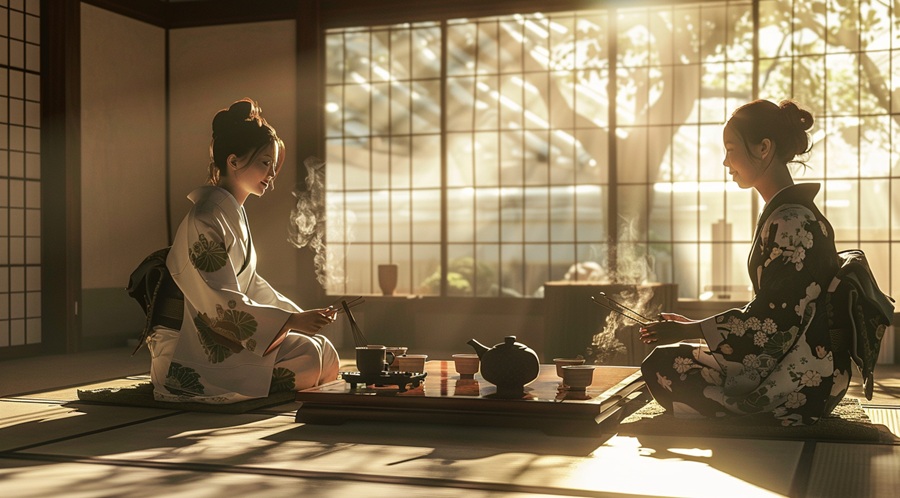
Tea Ceremony
Japanese Name
さどう
sadou
Description
- The Japanese tea ceremony, also called sadō or chadō, is a traditional cultural practice of preparing and serving powdered green tea (matcha). It is not only about drinking tea, but also about showing respect, harmony, and mindfulness. The host carefully prepares the tea in a calm, ritualized way, often in a tea room with special utensils. Guests appreciate the tea, the atmosphere, and the spirit of hospitality.
History
- Historical Significance: The practice of tea drinking in Japan began in the 9th century when Buddhist monks brought tea seeds from China. However, the formalized tea ceremony developed in the 15th and 16th centuries, largely influenced by the tea master Sen no Rikyū, who emphasized simplicity and spiritual depth.
- Cultural Impact: The Tea Ceremony is not just about drinking tea but is a spiritual and aesthetic experience that highlights mindfulness and the appreciation of beauty in everyday life. It is deeply connected to Zen Buddhism and Japanese culture.
- Practice: The ceremony involves specific steps for preparing, serving, and drinking tea, along with the careful arrangement of utensils and the setting.
- Philosophy: The Tea Ceremony expresses values such as respect for guests, humility, and the fleeting nature of life.
Learn more Japanese words?
Play our free typing game and master Hiragana & Vocabulary in a Zen atmosphere. 🍵
🎮 Play Game